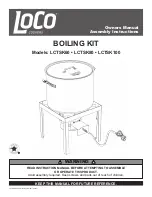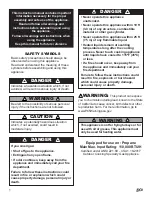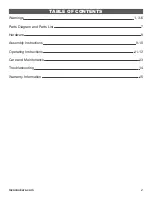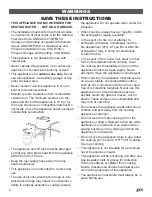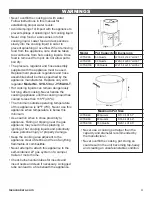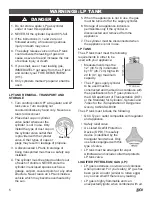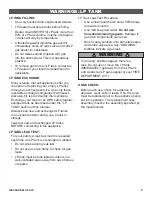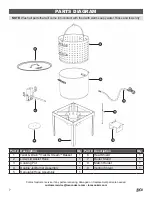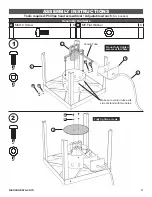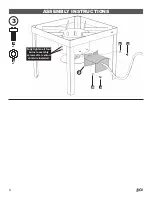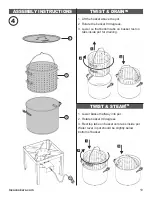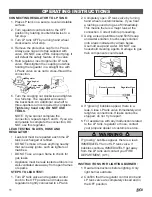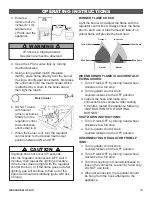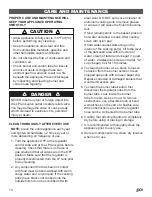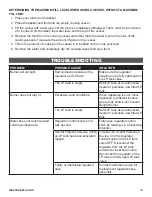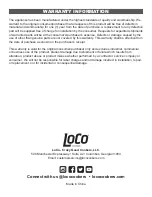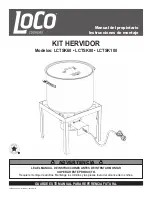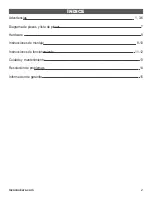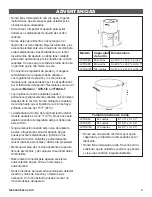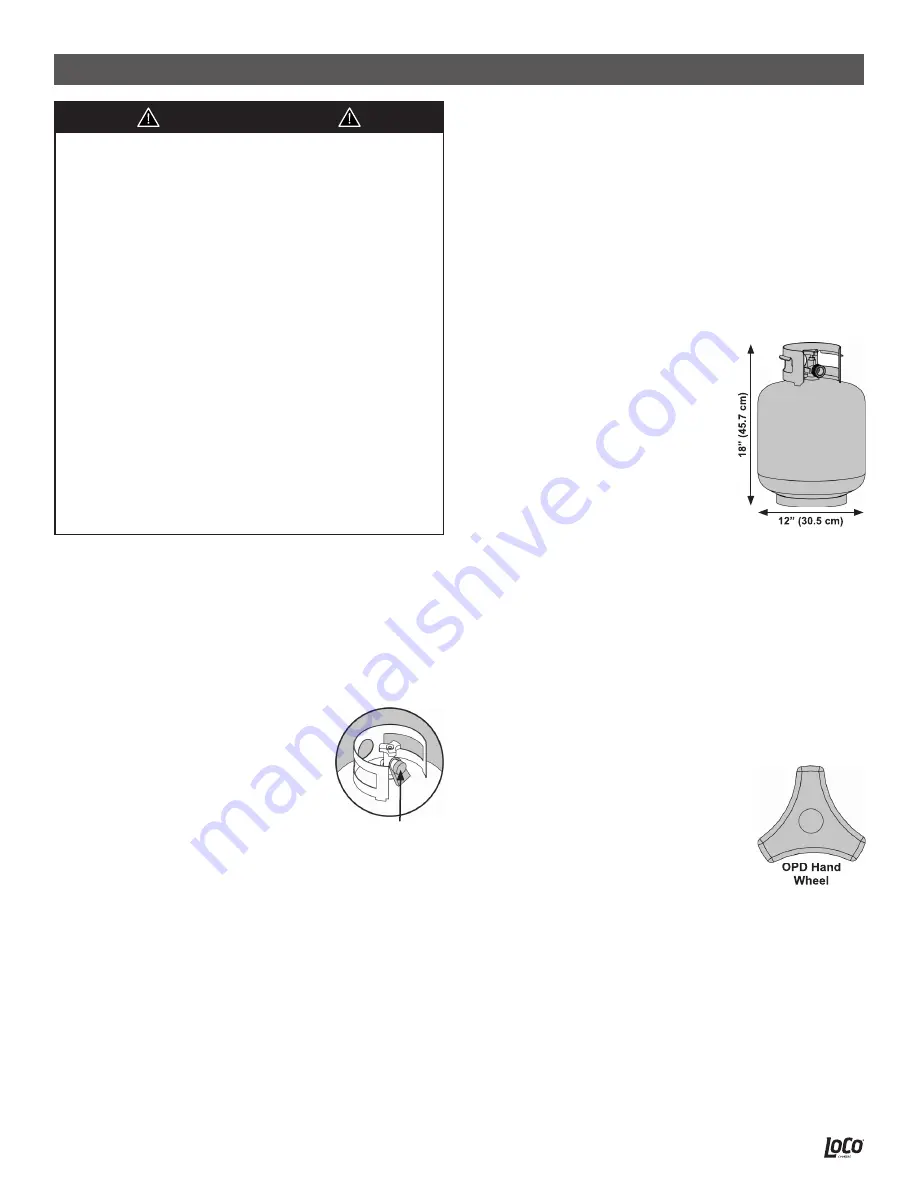
5
WARNINGS: LP TANK
1. Do not store a spare LP gas cylinder
under or near this appliance.
2. NEVER fill the cylinder beyond 80% full.
3. If the instructions in 1 and 2 are not
followed exactly, a fire causing serious
injury or death may occur.
4. The safety release valve on the LP tank
could activate the leaking of gas and
cause a severe fire and increase the risk
of serious injury or death.
5. If you smell, see or hear leaking gas,
IMMEDIATELY get away from the LP tank
and contact your FIRE DEPARTMENT
(911).
6. Only cylinders marked “propane” shall be
used.
DANGER
LP TANK REMOVAL, TRANSPORT AND
STORAGE
1. Turn control knobs OFF at regulator and LP
tank valve. Turn coupling nut
counterclockwise by hand o
nly. Never use
tools to disconnect.
2. Place dust cap on cylinder
valve outlet whenever the
cylinder is not in use. Only
install the type of dust cap on
the cylinder valve outlet that
is provided with the cylinder
valve. Other types of caps or
plugs may result in leakage of propane.
3. A disconnected LP tank in storage or
being transported must have a safety cap
installed.
4. The cylinder must be stored outdoors out
of reach of children. NEVER store the
cylinder in enclosed spaces such as a
garage, carport, covered porch or any other
structure. Never leave an LP tank inside a
vehicle which may become overheated by
the sun.
Dust Cap
5. When the appliance is not in use, the gas
must be turned off at the supply cylinder.
6. Storage of an appliance indoors is
permissible only if the cylinder is
disconnected and removed from the
appliance.
7. The cylinder must be disconnected when
the appliance is not in use.
LP TANK
The LP tank must meet the following
requirements in order to be
used with your appliance:
• Measurements must be
12” (30.5 cm) in diameter
by 18” (45.7 cm) high with
20 lb (9.1 kg) maximum
capacity.
• The LP gas supply cylinder
to be used must be
constructed and marked in accordance with
the specifications for LP gas cylinders of
the US Department of Transportation (DOT)
or the Standard for
Cylinders, Spheres and
Tubes for the Transportation of Dangerous
Goods,
CAN/CSA-B339.
The LP tank must include the following:
• QCC Type 1 outlet compatible with regulator
and appliance.
• Safety relief valve.
• UL Listed Overfill Protection
Device (OPD). This safety
device is identified by the
triangular hand wheel. Only
use tanks equipped with this
type of valve.
• LP tank must be arranged for vapor
withdrawal and include collar that protects
LP tank valve.
LIQUIFIED PETROLEUM GAS (LP):
• LP gas is odorless, non-toxic and colorless
when produced. For your safety, LP gas has
been given an odor (similar to rotten eggs)
so you can smell if there is any leaking.
• LP gas is highly flammable and can
unexpectedly ignite when combined with air.

